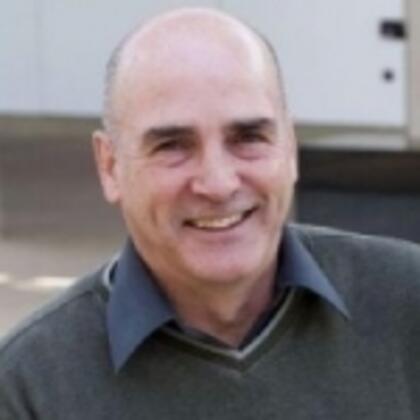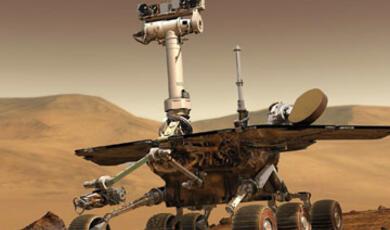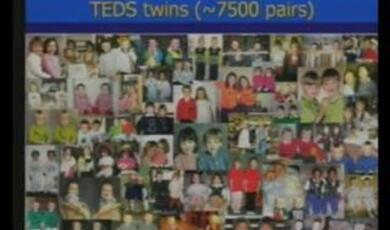Human Livelihoods Depend on Wild Flowers: Kew’s Millennium Seed Bank explained
Share
- Details
- Text
- Audio
- Downloads
- Extra Reading
In this talk Dr Robin Probert explains why human livelihoods depend so much on wild plant diversity. He outlines the current threats to wild plants across the globe and how Kew's Millennium Seed Bank Partnership works to conserve plants and make seeds available for habitat repair, re-introduction and research. Current work in the UK that aims to restore wildflower meadows and other threatened habitats is also highlighted.
Download Text
10 July 2012
Human Livelihoods Depend on Wild Flowers:
Kew's Millennium Seed Bank Explained
Dr Robin Probert
In this talk I will explain why human livelihoods depend so much on wild plant diversity. I will also explain the current threats to wild plants across the globe and how Kew's Millennium Seed Bank Partnership works to conserve plants and make seeds available for habitat repair, re-introduction and research. I will highlight current work in the UK that aims to restore wildflower meadows and other threatened habitats.
Everybody appreciates the importance of crops but few people appreciate that these represent just a tiny fraction of the plants on earth and that many thousands of different wild plant species are also crucial to our survival. We use wild plants directly as a source of food, medicine and shelter but they are also the building blocks of the earth's terrestrial ecosystems which provide vital services such as the air we breathe, clean water and shelter. Environmental economists estimate that the annual value of these ecosystem services worldwide could be between 30 and 40 trillion US dollars.
Consider the direct uses of wild plants as a source of food and medicine. A study in southern Africa showed that wild plants accounted for 30% of household livelihoods. A similar study in Tanzania showed that almost 50% of the vegetables consumed by people were harvested directly from the wild. Wild plants are often important to people for many different reasons. The tree Moringa oleifera, seeds of which are safely conserved at the Millennium Seed Bank, is a good example. One of its local names in Africa, the 'miracle tree', is very apt because every part of the tree is used by local people. The immature seed pods are eaten as a vegetable, a medicine is extracted from the roots, the branches are used as fuel wood and the dried seeds are used as a powder to purify water.
Few people appreciate that 80% of our plant based food intake comes from just 12 domesticated species - eight cereals and four tubers - and yet about 30,000 different plant species are edible. Many of these are regularly harvested directly from the wild or cultivated in different parts of the world. Given the environmental challenges we face, and the need to feed an ever growing human population, we should ask ourselves whether we can continue to rely so heavily on such a tiny fraction of edible plant diversity for our future needs.
Three quarters of people still rely on wild plants as a source of medicines and some have provided us with our most important drugs. Aspirin, for example, was originally extracted from the bark of willow and has probably been used as a pain killer for thousands of years. In the last few decades, the rosy periwinkle, a poisonous plant from the tropics, has given us two drugs, Vincristine and Vinblastine, that have completely changed survival rates for lymphoma and childhood leukaemia. Sales of a drug from the beautiful Ginkgo biloba tree, used in the treatment of heart disease, are worth 360,000,000 US $ a year.
OK, wild plants are important, so what's the problem? The problem is that wild plant diversity is under threat across the planet. The biggest threat is still land conversion for development and agriculture. Sadly, there is a very simple relationship between biodiversity (the numbers of different living organisms present) and the area of land available. When we lose land we lose biodiversity. There are countless examples, but a good one is the almost complete destruction of an area, roughly the size of Wales, of coastal rainforest (the Mata Atlantica) in Brazil, between 1945 and 1990. We simply have no idea how many plants and other organisms became extinct as a result of that destruction. Life forms that we will never have a chance to study for their potential use. How many rosy periwinkles? We will never know.
The summer floods we have endured for the last three years are no laughing matter and testament to the fact that something is going horribly wrong with our climate. In his 2006 report on climate change, Sir Nicholas Stern predicted that between 15 and 40% of species could become extinct with just 2°C of warming. Most climate scientists now believe this to be an underestimate. The Millennium Ecosystem Assessment predicted that between one in five and one in three of all plant species could be facing extinction. Worse still is the fact that the current rate of extinctions of known living organisms is at least 1,000 times faster when compared with the background rate of extinctions that can be determined from fossil records. This is the reason why scientists claim that the sixth mass extinction of life on earth is already underway. This time, rather than a cataclysmic event like a super volcano or the impact of a massive meteorite like the one that wiped out the dinosaurs approximately 65 million years ago, we humans are the sole cause.
So that's the bad news, is there any good news? Well yes there is, at least for the conservation and future use of wild plants. The vast majority of the world's flowering plants, approximately 300,000 different species, have evolved seeds that can withstand drying. This is so they can withstand harsh environmental conditions from one generation to the next and why we can regard seeds as time capsules of life capable of travelling in both time and space. This remarkable ability for seeds to remain alive after drying sparked the beginning of agriculture approximately 10,000 years ago and has enabled modern seed banks to evolve over the last few decades.
By exploiting this natural property of seeds seed banks can now offer an insurance policy for the future. But seed banks such as the Millennium Seed Bank are not just about saving seeds for some possible use long into the future. They are also about making seeds available right now for urgent habitat repair, and for the research and development of new species for forestry, agriculture and medicine.
The Millennium Seed Bank Partnership builds on the success of the Millennium Seed Bank Project. The Millennium Seed Bank Project, which ran from 1997 to 2010, was mainly funded by the National Lottery, through the Millennium Commission. Kew is very proud of the fact that this project, with its objective to safeguard one in ten of the world's flowering plants by 2010, was delivered on time and on budget. The current phase still has a hugely ambitious collecting target but now the main emphasis is on the use of seed collections for the urgent repair of damaged habitats and for research. The project purpose captures this: "To combat potentially catastrophic threats to human wellbeing by safeguarding wild plant diversity and enabling its sustainable utilisation through global partnership".
The Millennium Seed Bank vault housed in the Wellcome Trust Millennium Building (WTMB) at Wakehurst Place in West Sussex is the hub of a global network of over 120 organisations operating in 50 countries across the world. Some of our partners refer to the WTMB as the 'Mothership' which sums up the important training and capacity building role we play for many of our partners. All of our partnerships are underpinned by legally binding access and benefit sharing agreements (ABSAs) that set out the terms and conditions under which we work with our partners to safeguard plants and ensure that seeds are available for future use.
What does the Millennium Seed Bank partnership actually do?
Collecting and conservation
At the heart of all of our partnerships is a seed collecting programme. To answer the question: How do we prioritise collecting? we often refer to the three Es. The first E is for Endangered because we must save plants that are on the brink of extinction because we simply don't know how important those species might be in the future. A good example is the extremely rareCylindrophyllum hallii a succulent species from South Africa. A few individuals were discovered by our partners and now the seed is safely stored both in South Africa and at the Millennium Seed Bank. We have also raised plants of this species that will be used for re-introduction into the wild. The second E is for Endemic which refers to plants that are unique to a particular country or region. These are important because if they are lost from that place they will be lost from the planet. The final and most important E is for Economic which refers to the multitude of wild plants that are important for people's livelihoods. For example, we have begun major new programmes with partner organisations focusing on crop wild relatives and forestry species.
The first and most important step in seed banking is to dry seeds from a relatively high moisture level at the time of harvest. There is a simple rule of thumb which says that for every 1% reduction in seed moisture content, which is roughly equivalent to a 10% reduction in humidity, seed life spans will double. The international standard for seed drying is 15-20% relative humidity and reducing moisture to this extent will typically increase seed storage life by 20 fold.
After seeds have been safely dried they must be sealed in an air-tight container in order to keep them dry. At the Millennium Seed Bank we use glass containers but many seed banks use foil packets which also work well.
After sealing, containers are then placed in the seed bank cold rooms which operate at -18°C, the same temperature as a domestic freezer. There is also a rule of thumb about the benefit of cooling seeds which says that for every 5°C reduction in temperature seed life spans will also double. Thus with the combined effects of drying, sealing and then cooling, seed of most species will survive for many decades and some for hundreds, if not thousands, of years.
The vault at the Millennium Seed Bank holds more living plant diversity per square metre than anywhere on earth - arguably the world's hottest plant biodiversity hotspot. As of July 1st 2012, over 31,000 plant species have been safeguarded by the Millennium Seed Bank Partnership. These collections are held in the country of origin and safely duplicated at the Millennium Seed Bank. This insurance policy is the greatest service we can offer our partners because we store the collections according to international standard and because we can conduct research to add value to those collections.
Technology transfer and science
Technology transfer and training were extremely important elements of the Millennium Seed Bank Project and continue to play a role as we strive to form new partnerships and improve standards for seed conservation. Between 2000 and 2010 we were able to provide nearly £14 million of direct support to partners to establish facilities and recruit and train staff. Over 1,300 people received training, much of it in-country, during this period and in all cases was based on a needs assessment. Training was, and still is, delivered at a variety of levels from technical seed handling to post-doctoral research. We developed new seed technologies and shared them with partners, for example, non-destructive seed moisture testing. We also helped partners establish seed facilities from scratch. For example, we provided some modest funding to our partners in Queensland, who were then able to leverage additional funding from the Queensland government which was used to convert a general storage area beneath the herbarium at the Mt Coot-tha Botanic Garden in Brisbane into a state- of- the- art seed conservation laboratory, complete with walk-in dry room.
The most important day-to-day scientific task at the Millennium Seed Bank is setting up germination tests. We do this for two reasons. First, so that we can check that our seed collections are still alive and, secondly, because we need to develop germination protocols that can be used to convert seeds into plants when they are needed in the future. One of the problems in dealing with seeds of wild plants is that they often possess dormancy. Plants have evolved dormancy so that, in nature, seeds will only germinate at the right time and in the right place. Unlocking these dormancy mechanisms can be a tricky business and requires knowledge about where plants come from and the climate they are adapted to. Every year over 10,000 germination tests are set up in the Millennium Seed Bank laboratories.
An important scientific question for seed bank managers is: how long will seeds survive in a seed bank? Recent research has confirmed that seed longevity can vary by four orders of magnitude across different species. Some are able to survive for thousands of years but others lose viability completely after only a decade or so. The crucial question, which we now have some answers for, is: which seeds are short lived and which are long lived? It turns out that seeds with small embryos that come from cool wet regions are inherently short lived, whereas seeds with big embryos originating from warmer, drier regions tend to be longer lived. This knowledge is now helping us to better manage our collections by helping us to set appropriate viability test intervals.
Occasionally, we are sent samples of ancient seeds. Testing these helps us to validate the question of seed longevity. A few years ago we were sent some seeds from the National Archive. The seed samples were discovered by a curator in a wallet that belonged to a Dutch merchant called Jan Teerlink who was captured by the British Navy off the coast of South Africa in 1803. It seems that Teerlink was returning to Europe via Cape Town after a tour of the Far East. He probably picked up the seed samples from the Cape Town botanic garden intending to bring them back to Holland to grow. Instead, his seeds remained in his wallet, first in the Tower of London, and then in the National Archive, until they were discovered by the curator who was curious to know whether any might still be alive. Thankfully, he thought of us, and one of my colleagues, Matt Daws, duly set up some germination tests. Amazingly, the seeds of two species, one Acacia and one Leucospermum, not only germinated but have since gone on to produce healthy plants. That 200 yr old seeds were still alive and able to germinate was not only a great news story but also valuable supporting evidence for our research that predicts that some seeds can survive for that long. And remember, Jan Teerlink's seeds were not stored in a seed bank!
Enabling use
Solving seed dormancy problems is not only important for checking the viability of seed collections held at the Millennium Seed Bank. Seed dormancy can be a major stumbling block to the cultivation of plants by people who depend on them. In Southern Africa, the mongongo tree is particularly important for local people, mainly because the mongongo nut is extremely nutritious. However, populations of the mongongo tree in Botswana have suffered and declined because it is also an important source of fuel wood. New trees were not being planted because people did not know how to germinate the seeds. It turns out that mongongo nuts need to be scarified and then soaked in a smoke solution before they can germinate. We have shared this knowledge with our partners in Botswana who now have a way to generate seedlings of the mongongo tree that can be used to safeguard the species in the wild and support the livelihoods of local people. This is just one of numerous examples of how the application of seed science and technology can contribute directly to the nutrition and health of people.
But Kew's seed conservation and horticultural expertise can also play an important role in species conservation and habitat repair much closer to home. Recognising the huge economic and cultural importance of ecosystems and biodiversity the UK Government has set out a clear commitment, backed by some funding, to drive the conservation and restoration of the UK's ecological network. In 2010, Sir John Lawton published 'Making Space for Nature' and in 2011 Defra launched a Natural Environment White Paper 'The Natural Choice: securing the value of nature'.
Responding to these initiatives, and Kew's commitment to support conservation and habitat repair in the UK as well as overseas, Kew launched the UK Native Seed Hub (UKNSH) in August 2011.
Work to create and enhance lowland meadows on the estate at Wakehurst Place has been going on since the 1980s and has accelerated in the last decade, in collaboration with the Weald Meadows Initiative. Lowland meadows are one of the UK's most important and most threatened habitats, having shrunk by 97% compared to their pre-second world war levels. Apart from enriching our lives with their sheer beauty, these meadows are a vital source of food and cover for bees, butterflies and birds. Sadly, the modern approach to agricultural production has created a boom and bust situation for bees and other pollinating insects. Species-rich meadows are a vital source of pollen and nectar, especially during June and July, when crops that supported the nutrition of insects earlier in the year have already been harvested.
The supply of high quality seeds is central to effective habitat creation and restoration efforts. Current demand for seeds of native wildflowers by both professionals and the general public is huge. There are a relatively small number of UK native seed producers struggling to meet this demand. Our own analysis of the quality of seeds, and the range of species currently available on the market, convinced us that we should share our expertise to support this growing industry. Thus the main aims of the UK Native Seed Hub are:
To improve the quality, availability and appropriateness of UK native seed
To support the native seed industry in responding to increased demand
To support restoration, enhancement & reintroduction initiatives in the UK
Probably the most important service we can provide is advice and training. The reasons for poor seed quality include harvesting seeds before they are fully ripe, inappropriate handing and drying of seeds after harvest, and little or no control of the environment where seeds are stored. Each of these areas has been the subject of detailed research at the Millennium Seed Bank for many years and has been published in the mainstream scientific literature. We now want to share this knowledge, and translate it into practical guidelines that commercial seed companies can understand and implement.
Much of our work will be delivered through partnerships with public and private sector organisations as well as charities such as Flora locale. We are delighted to be partners in the South Downs National Park's successful bid for one of the Government's 12 Nature Improvement Areas (NIAs). For the South Downs NIA our expertise will be used to collect, process, store and use chalk grassland seeds to establish restoration trails.
Another important aspect of the UK Native Seed Hub will be seed production and supply. In consultation with commercial partners, we will focus on species that are either currently unavailable or not widely available. Our aim will be to generate kilogram quantities of seeds that are high quality both in terms of genetic variation and seed viability. We will make that seed available to seed producers who can then create commercial quantities of seeds and plants for landscape scale use. Seeds will be sold to commercial customers on a cost recovery basis and we will also offer seed quality and seed viability testing services where appropriate.
We will also carry out research and development studies to solve germination problems and improve nursery production techniques for UK native plants. For example, at the moment we are studying seed priming techniques to improve germination and seedling establishment. Significant loses can occur during this crucial early stage in the plant life cycle, causing devastating consequences for field production and yield. Even more important is the genetic bottlenecking caused by such loses. When wild plant species are used to restore damaged habitats it is important that the introduced plants have the maximum possible genetic variation to give them resilience against disease and environmental stress.
Our 1 hectare seed production site at Wakehust Place is due to open to the general public on 17th July 2012 and this new visitor attraction will provide excellent opportunities for us to engage and educate the general public about the importance and beauty of UK native plant diversity. After all, if we can thrill and inspire children about wildflowers then there is a hope that the UK's biodiversity will be in safe hands.
Where do we go from here?
The Millennium Seed Bank Partnership has three main targets for the period between 2010 and 2020:
Secure in safe storage 25% (75,000) of the world's plant species by 2020
Enable innovation, adaptation and resilience in agriculture, horticulture, forestry and habitat restoration.
To ensure the long-term financial security of the Millennium Seed Bank Partnership
Such ambition obviously comes with significant cost – roughly £100 million. This might sound like an impossibly large sum of money, especially in these hard times. But is it? After all it is only roughly equivalent to the annual salary bill of one of our top premiership football clubs or the cost of one Eurofighter jet. And when you consider that this equates to just £2,000 for each plant species safeguarded and available for future generations, then it begins to look extremely cost effective.
Two thousand pounds is what the average smoker spends on cigarettes every year or what Europe spends on cosmetics and toiletries every second. Just think, this amount of money could safeguard a plant that could hold a cure for cancer. Another rosy periwinkle maybe? It is very easy to support Kew's Millennium Seed Bank Partnership, just visit http://www.kew.org/support-kew/adopt-a-seed/index.htm
In a nutshell
Human livelihoods depend on wild plant diversity
Land conversion and climate change are its biggest threats
Seed conservation and use is a very cost effective strategy for combating current threats
© Dr Robin Probert 2012
Part of:
This event was on Tue, 10 Jul 2012
Support Gresham
Gresham College has offered an outstanding education to the public free of charge for over 400 years. Today, Gresham College plays an important role in fostering a love of learning and a greater understanding of ourselves and the world around us. Your donation will help to widen our reach and to broaden our audience, allowing more people to benefit from a high-quality education from some of the brightest minds.


 Login
Login







